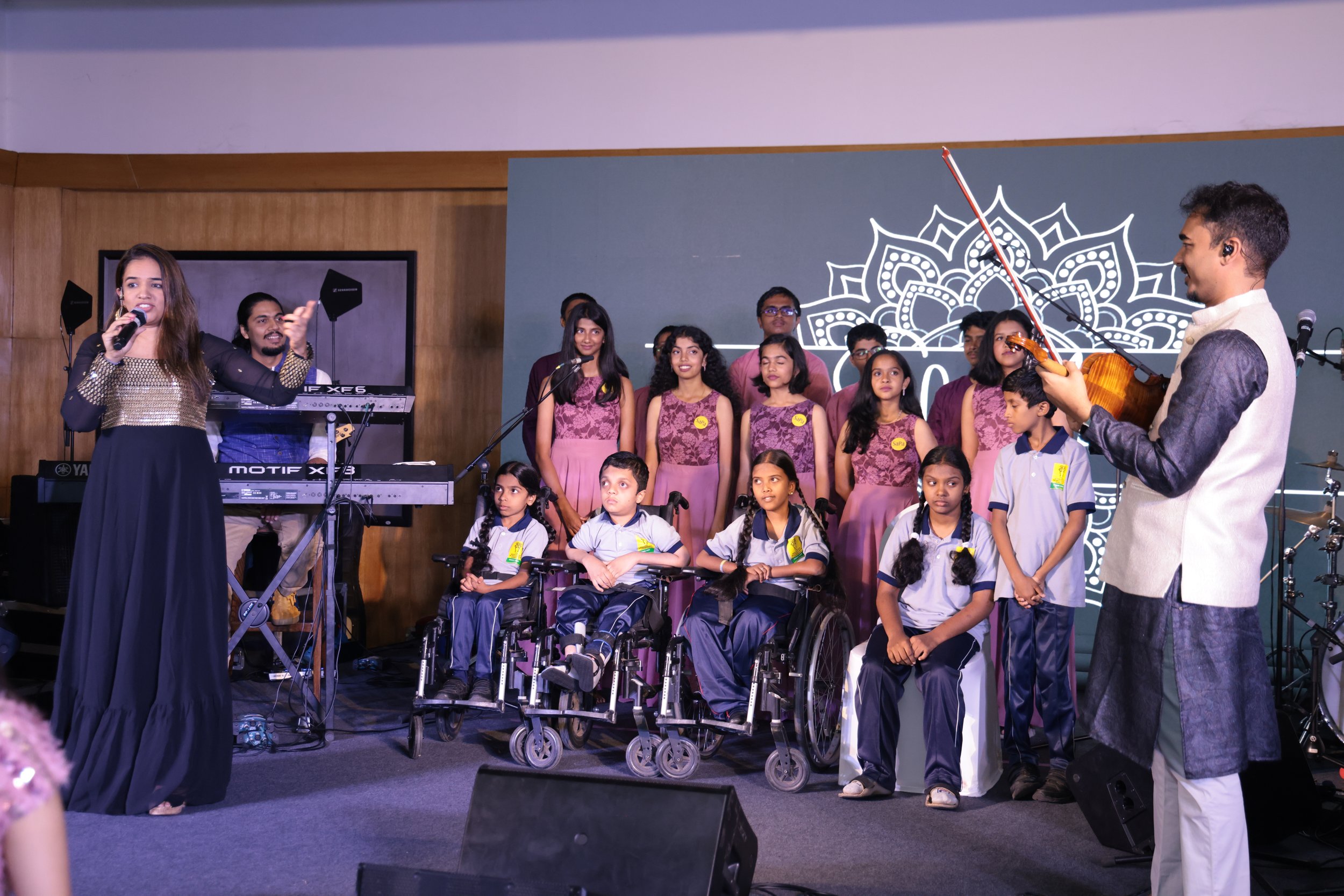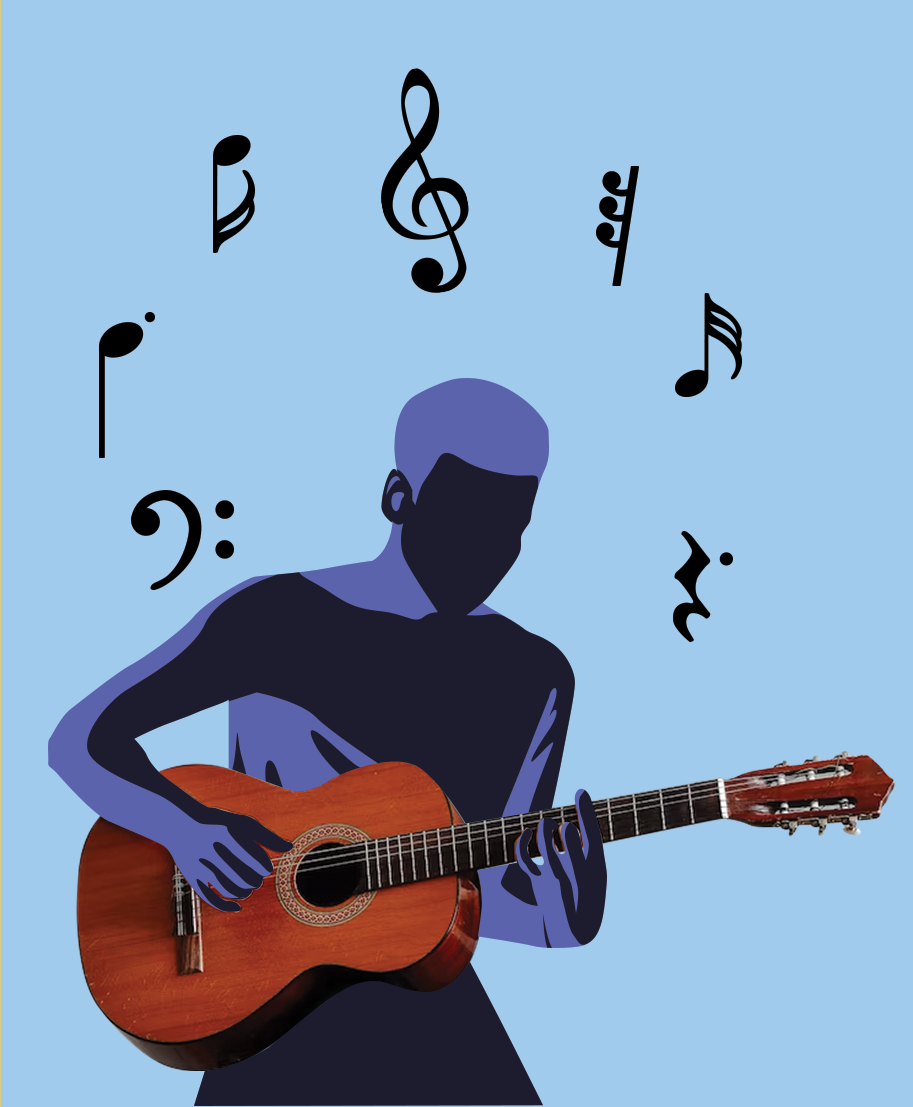Purposeful StoriesSeptember 2023
Harmony
To say that, presently, we live in an extremely polarised world will be an understatement. Many will agree that disharmony in many parts of the globe is excruciatingly painful at so many levels, especially in the manner misery is inflicted on the dispossessed, disempowered, and disadvantaged sections of societies. And then, the onus of peace is also put on the survivors.
In this seemingly grim scenario, music is something that has the potential to connect hearts and minds and spread the universal message of harmony. In music, harmony is the amalgamation of simultaneous sounds of different pitches, making chords to create harmony in singing and harmony between various musical instruments. Musical harmony involves artistic endeavours.
Ensuring harmony and confluence in a modern society without bitterness or uncontrolled anger remains a tough challenge, though. On our planet, competitive existence is still possible if we choose wisely, engage with music in imaginative ways, and reconnect with nature to find synchronisation and a harmonious relationship. At any rate, the objective should be not to lose our soul, and not to strike a discordant note. This can be made possible by working closely with the next generation. Remember, today’s children are tomorrow’s future!
It is an irrefutable fact that anger is distasteful any day. Angry athletes make mistakes. However, harmony allows us to channelize anger or frustration in a positive direction to spread the message of love, empathy and kindness. But, how can we make this happen? It is indeed possible through musical harmony, by finding refuge in nature's lap, and by striking a balance between our body and mind.
Because we believe everyone should feel comfortable in their own skin.
Musical Musings
It is often said that we listen to songs when we are in a happy space, and we understand the lyrics when we are in a state of grief. We often hear people talk about the word HARMONY in everyday conversation. But, what is harmony in music? Is it all about the interface between two or more musical notes or musical instruments?
In fact, musical harmony transcends all kinds of boundaries, and connects us to a wider world as global citizens and ambassadors of our diverse cultures and traditions. Music offers hope. It helps us in developing a broader understanding of convergence and flowing together! Let’s dance to the musical tones and sing songs that bring joy and create harmony.
Bindu, her sibling Ambi Subramaniam, a sizzling violinist, and their two other colleagues—Mahesh Raghvan and Akshay Anantapadmanabhan—are a part of an attention-grabbing musical endeavour namely The Thayir Sadam Project. A wonderful quartet comprising Bindu, Ambi, Mahesh and Akshay is attracting the next generation to classical music in innovative ways.
Bindu and Ambi are the children of celebrated musicians and singers Dr. L. Subramaniam and Kavita Krishnamurti. Dr. Subramaniam, Bindu’s father, established the violin as a globally-recognized solo musical instrument. Bindu and Ambi are deeply influenced by their father’s passion for music. From him, they learned innovative techniques and how to play violin that resonated with music lovers and audiences in both Eastern and Western worlds.
Being born in a family with a rich musical tradition has, indeed, its merits and demerits. There are huge expectations, too. There are critics who’d talk about the privileges but seldom about the weight of expectations. At times, the gigantic expectations can weigh you down. But nothing has deterred the Bindu-Ambi duo. Both are enjoying the journey of music with passion and love. They have carved out a separate niche for themselves at the global stage as musicians and songwriters.
In 2014-15, Bindu started the Subramaniam Academy of Performing Arts, or SaPa. The idea was to bring focus on music as a serious subject, and not just a fun-based activity performed during the school day functions once every year. In the last nine years or so, SaPa has emerged as an eminent training academy of music, both in online and hybrid mode. Like Bindu and Ambi, many children in India are now attracted to classical music and working hard to realise their dreams, passions and true potential as musicians and vocalists.
SaPa has a mission to accomplish: “Make Music Universal.”
In many parts of the world, including India, music is still treated as an activity for fun or hobby and not a full-fledged subject that calls for our attention. This is what profusely bothered renowned singer, musician and songwriter Bindu Subramaniam. She wears many hats. Apart from being a songwriter, Bindu is also a successful entrepreneur.
Catch them young
In an exclusive chat with Gnothi Seauton, Bindu Subramaniam underscores the need to create positive associations and introduce music to children very early before various kinds of prejudices set in. She remains focussed on her mission to transport music and harmony to the next generation.
“Disharmony stems from ignorance,” Bindu says, adding that “music is a powerful platform for children to understand harmony, compassion and resilience.” Working with children allows Bindu and her team to nurture the musical talent of the younger generation through well-oiled programmes in educational institutions. She appreciates the power of harmony. Her focus remains on finding a human connection so that everyone she comes across feels loved and respected.
Music is a potent tool of communication, too. It telegraphs messages in a manner that no other form of communication does. Bindu believes in the energy that music produces and how musical notes strike a chord with kids. “Why can’t we present and introduce music to kids in a different way?” she asks. For her, it is imperative to render music a meaningful part of a child’s life.She bats for a human connection and personal interaction with the up-and-coming musicians and songwriters.
“I have been very confidently telling people for some years now that music education is most powerful when the teacher is in the same room as the students, and they are making eye contact, and they are reading each other’s body language, and they are in a circle, and they can move.”
This, however, was impossible during the COVID19 pandemic in 2020-21. “During the pandemic, it was an overnight shift for us and for the tens of thousands of kids that we worked with because we have always been strongly non-digital.”
Creativity of kids can surprise us in so many different ways. Bindu has been overawed by the talent and skill of her students. Sharing an interesting anecdote, Bindu says that once a group of Grade VIII students came up with a protest song about potholes. This was very imaginative and different in more ways than one. And there are other girl students who, Bindu says, write a lot about topics such as Self-worth or Lack of Self-worth. The ideas of her students of music are phenomenal, she says with a sense of pride.
For Bindu, music is therapeutic too, and an intrinsic part of her life that allows her to search for new meanings of life. “Songwriting is half-therapy, " Bindu says, adding that a song sung by a singer or a piece of music played by a musician is interpreted in so many different ways by the art lovers. That is the beauty of art.
On the personal front, she ensures whatever she does should bring a lot of joy and spread happiness around. That’s her unique way of making a positive contribution. The purpose is to try and create safe spaces for everyone, especially children, and a bit of harmony in the world. Her work takes her across continents where music helps her connect to a cross-section of global audiences and interact with music lovers from a variety of backgrounds.
How do we look at music as a meaningful space for people to freely express how they feel in a particular situation? Bindu started Joy Workshops that helped her reach out to various regional and global organisations. “And we started doing these (music) workshops for various teams and their families completely for free. We would sing and play music for about an hour while forgetting everything else, play some games and do activities for fun.” Music for Joy workshops helped Bindu and SaPa to a great deal.
She emphasises that any creative endeavour should not be used as a tool to achieve fame. Instead, creativity is meaningful when you achieve excellence and become an accomplished artist. Fame or celebrity-hood has its own downside and drawbacks. “And if you choose to be an artist and you choose to put yourself in the limelight, you have to protect your personal persona. And it cuts both ways, right? If you’re 14-years-old and you suddenly have 90,000 likes on a social media platform, then there are consequences as well. If someone says something that’s not nice about you, then that affects you as well.”
The only person that you have to impress is yourself. “So you ought to just disconnect and realise that your job is to create content. You are not your art. And this process of creating content is very personal, it's very honest, and it's very authentic,” she concludes.
Nature's Lap
Children remind us about the concepts of beauty and innocence. Nurturing and grooming of kids is vitally important to enable them to navigate various challenges in future. It is often said that the mother’s lap is the child’s first school. Before a child is admitted in a school formally, there is a developmentally appropriate learning concept called Kindergarten (“Garden of Children”).
In 1840, Friedrich Froebel (1782-1852) started the first Kindergarten. Froebel’s idea was to prepare children for formal education in a playful method and in a space closer to nature. “Children are like tiny flowers; they are varied and need care, but each is beautiful alone and glorious when seen in the community of peers,” according to Froebel. He is credited for creating or inventing the word Kindergarten. According to Froebel, in 1940, “a long strip of land became an essential part of the Kindergarten where the children planted and nurtured flowers, fruit and vegetables.”
Dr. Mudasir Firdosi, Consultant Psychiatrist and Clinical Lecturer based out of the United Kingdom, believes that for children in Kindergarten,
“These natural environments foster curiosity, creativity, and a deeper connection with the world around them,”
- Dr. Firdosi
Dr. Firdosi says, adding that the idea of open green spaces also contribute to improved mental health. In a chat with Gnothi Seauton, the psychiatrist argues that evidence supports the view that if children are raised in an environment closer to nature, they develop a positive association which helps in wider understanding of harmony.
In the Western world, kids aged between 4 and 6 are taken to Kindergarten to develop a harmonious relationship with nature. The objective is to work on a child’s social skills before the formal transition into the first grade.
Flight from technology Healing Gardens
Ecotherapy is a wonderful concept. One of its merits is that it offers a much-desired escape from technology and machines. Abhi and Rishi worked together on an idea of Healing Gardens with the aim to know how humans can positively contribute in the collective fight against global warming and climate change. The duo realised that “the solution lies in the soil below our feet”. At Healing Gardens, the duo thought that by bringing together regenerative organic gardens with Ecotherapy they could chip in for the betterment of planet Earth.
To find peace of mind, an individual has to discover harmony with nature. That is perhaps why most green spaces and gardens are referred to as Healing Gardens. To help patients heal faster in an environmentally friendly setting, many hospitals and healthcare facilities too are focusing on creating green spaces that specifically aim to improve health outcomes. Indeed, these green open spaces provide a sense of relief and are a place of refuge.
“Healing Gardens, with their open green spaces, play a vital role in promoting mental health and overall well-being. For patients, such gardens offer solace, reduce stress, and aid in healing process by providing a harmonious retreat from the clinical setting,” Dr. Mudasir Firdosi says, adding that “The harmony with nature in Healing Gardens nurtures both the young minds and the recovery journey, offering a therapeutic connection to the natural world.”
Human Value
Psychologists say that harmony is also a human trait. It helps you strike a fine balance among conflicting forces. It means having the sensibility and maturity to deal with disputes in a fair and balanced manner. When you are in a state of harmony, you automatically develop a better understanding of issues, interpret situations in an effective manner, and instead of reacting angrily you focus on responding with a calming demeanour.
Taking short breaks, meditating and giving our body and mind some rest allow us to understand people around us and their perspectives in a better way. However, harmony at the workplace does not mean that all team members have to sing the same song or dance to the same tune, but it is the acceptance of diverse talents, the art of appreciating each other’s success and not pouring scorn on a member’s failure. At the time of the team’s success, we experience an overflowing ecstasy as every member feels being on cloud nine. But what about the idea of harmony when things do not go as planned or when expectations are not met? That is the moment when team members require harmony, at the collective level, and harmony of their body and soul on the individual front. A symphony happens when there is acceptance of various musical beats and poetic verses!
What is your idea of harmony? Do you follow a fitness regime? What about yoga or meditation? How frequently do you listen to music or find refuge in the green meadows and woods to find harmony?
Curated Reads
Podcast
School of Purpose: Episode 6
Navigating India's Social Entrepreneurship Horizon
In the latest episode of Gnothi Seauton's "School of Purpose", we dive deep into the dynamic world of social-entrepreneurship with none other than Shiv Kumar, Co-Founder of Catalyst Group! Tune in now to gain a fresh perspective on the transformative potential of purpose-driven entrepreneurship in India today and the exciting prospects it holds for the years ahead.













